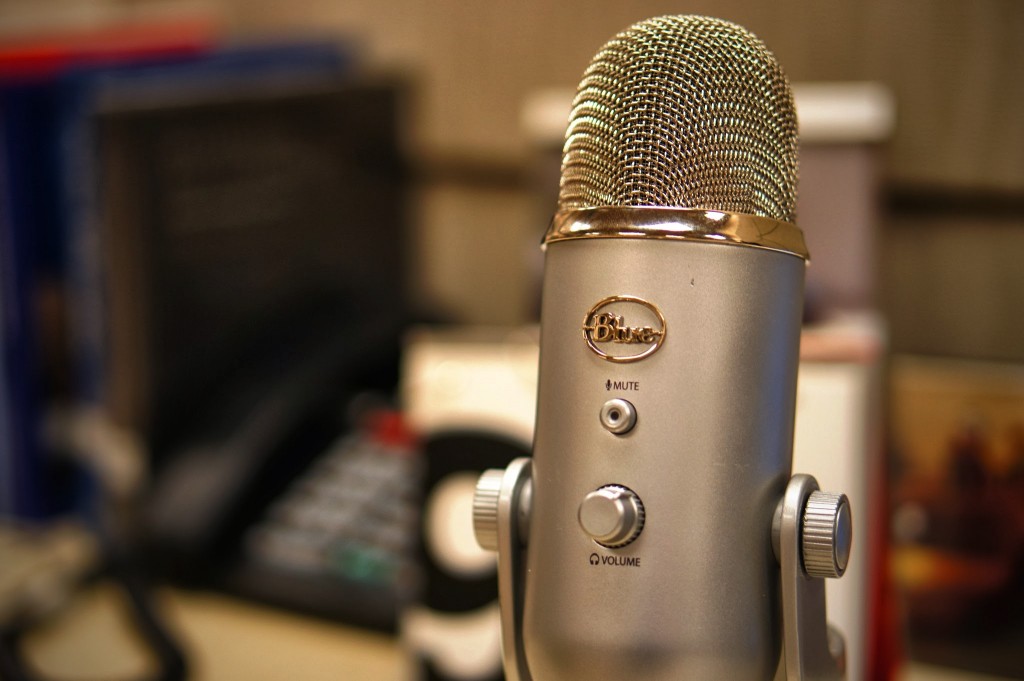The multimedia principles of e-learning are, in short, about the superiority of employing multiple media at once to instruct.
When your instructional goal isn’t to show and tell, specifically, or when you simply have lots of words but no visual component, you can use a medium with a long history of engaging people in journalism, entertainment, and education: audio recording of spoken words.
Audio is probably most powerful as a vehicle for bringing attention to people’s voices and stories. It may not be the best medium for explaining a technical concept or promoting memorization of specific details, but it’s surely better than text (or perhaps even video) for having experts or other interesting people share their stories.
A few examples:
- Planet Money / This American Life: The Giant Pool of Money
Voice and audio used to narrate an investigation. The hosts explain their journey toward to understand the financial crisis. You can see (hear) how the medium lends itself to seamlessly incorporating the frequent new voices of experts and others included in the narrative. The personality and idiosyncrasy makes the topic seem so much less dry. This could have been an (expensive, time-intensive) animated/video documentary, but just see how well they explain with just words!
- #PHONAR: Fred Ritchin lecture
In this “guest lecture” from #PHONAR, an open online education project about photography, audio is used as a medium for story and personal voice in a sort of long interview. NYU photography professor Fred Ritchin recounts memories and shares thoughts about the trickiness of telling stories through photos. Notably, by having audio only, the lecture seems to encourage you to Google the images, stories, and facts he’s talking about. (How much more interesting that journey was than if they’d just stuck the photos there in front of me!)
Multimedia principles
While this is technically not multimedia, I think we can see its value by looking at a couple of Mayer’s multimedia principles:
1. Coherence principle – People learn better when extraneous words, pictures, and sounds are excluded rather than included.
11. Voice principle – People learn better when the narration in multimedia lessons is spoken in a friendly human voice rather than a machine voice.
When the subject is personal—especially telling stories or building rapport, and when the visual components aren’t serving an important purpose, audio can be powerful. It’s a familiar medium to people, and it’s fairly easy to produce compared to video and animation.
Technical considerations
Equipment and technique:
On the DE team we use a few different USB microphones (the last of which can plug into an iPad with the right adapter). These are noticeably better than talking into the built-in mic on your laptop, phone, or tablet. They’re also not as good as using professional equipment.
Your audio recordings need not be NPR quality to be engaging, though. Most importantly, remember to speak slowly and keep the microphone close to your mouth. And don’t be afraid to let in ambient sound (or even to add sound, tastefully).
If you’re looking to get more serious, especially if you’re recording something that’s really worth keeping around for a long time, an excellent resource (which I found through that PHONAR course, mentioned above) is the Multimedia Train website.
Software for recording and editing:
On a Mac, use GarageBand! It’s easy to use and it’s fairly powerful. Just remember to export your file as an MP3 (or something else that works across platforms). On a PC, I’d recommend the free, tried-and-true Audacity.
On iPad, GarageBand only really lets your record “loops” and not long audio clips, so I’d possibly recommend Hokusai. You can also record easily in SoundCloud’s app, especially helpful if you’re uploading to there. Better still to edit on a computer, honestly, if it’s going to be at all complex.
Hosting/streaming:
The fanciest option for incorporating audio into your online course is embedding it through SoundCloud, which has sort of become the YouTube of audio. It’s pretty slick looking:
Audio files (especially a judiciously compressed MP3) are pretty small in 2014 terms, too, so it’s probably also feasible to offer your audio files as downloads.
